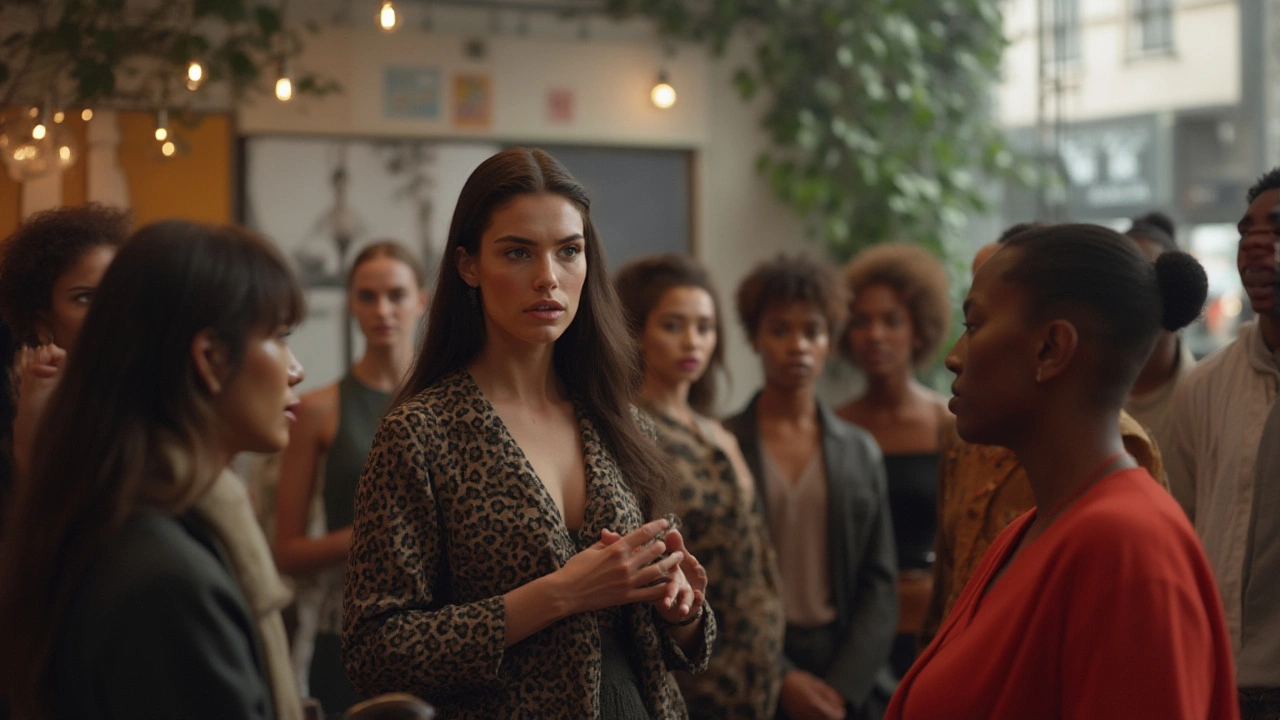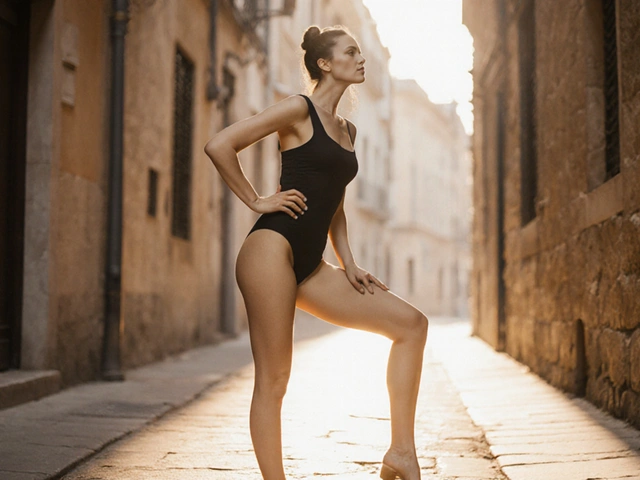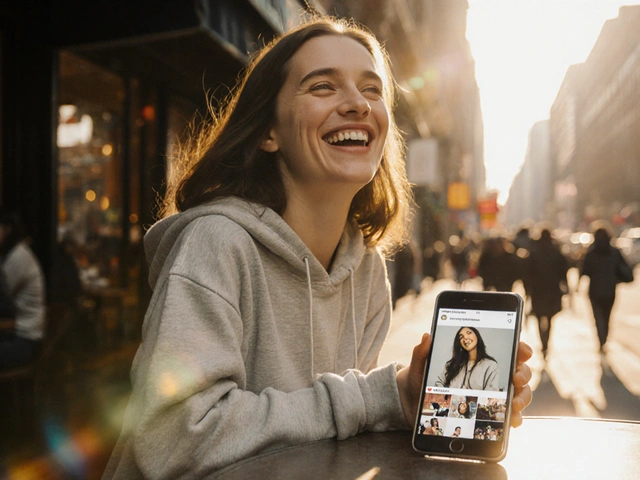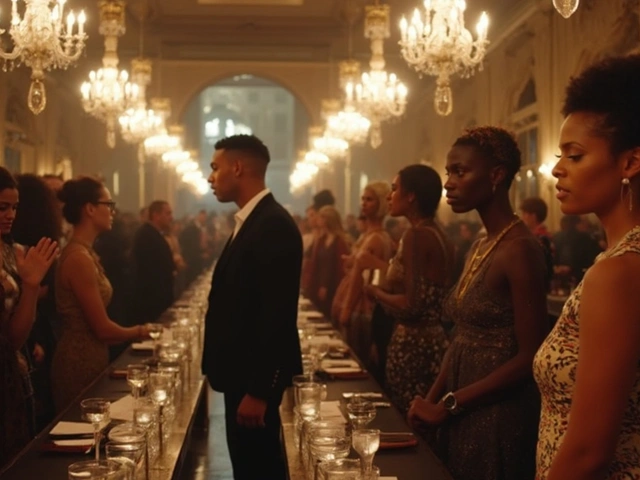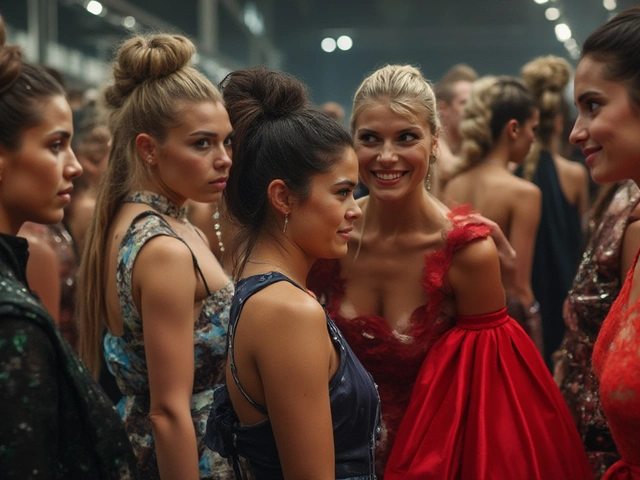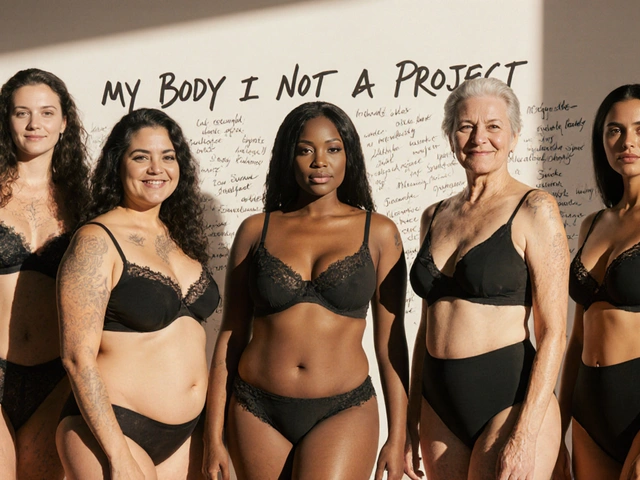If you think fashion modeling means just tall women and fancy poses, you're missing the best bits. There’s grit behind the glamour, and advice from real models often sounds far from what you’ll find in glossy magazines or Instagram captions. Between chaotic castings and long shoots, most pros have collected a toolbox of hard truths, strange hacks, and tricks to survive—and maybe even thrive—in the industry. If you’ve got big runway dreams or just want to see how far you can go, get ready: actual models spill the kind of advice only insiders know.
Behind the Spotlight: What the Runway Doesn’t Show
Everyone sees the finished look—perfect outfits, top-tier makeup, and those signature struts. But what no one tells you is the industry can get fiercely competitive. It’s nothing like high school theatre; rejection isn’t just now and then, it’s constant. Gigi Hadid once admitted she was turned down by Victoria’s Secret twice before ever booking a show. That’s normal, not a warning sign that you're not enough. The people who last are the ones who learn to brush off “no” and just keep showing up.
London agencies, for example, receive tens of thousands of applications every year. Only a fraction ever get signed, and fewer still book editorial jobs. Naomie Harris—before she ever made it as an actress—tried commercial modeling and was told repeatedly she “didn’t have the right look.” Her story’s proof that setbacks in modeling don’t say a thing about your actual worth or future.
The money can be erratic. Most models aren’t rolling in cash, despite what social feeds tell you. Unless you’re at the absolute top, expect long gaps between paid gigs. According to a British Fashion Model survey from late 2024, 68% of signed models said they still needed a secondary job. Popular jobs? Bartending, retail, café work—exactly what you’d expect from students. It’s a hustle, not a lottery ticket.
Health is another tightrope. Some agencies push unhealthy standards. Jourdan Dunn talked about hiding in bathrooms to eat snacks because she feared criticism for putting on “even a pound.” Others, like Adwoa Aboah, have used their platforms to fight for more inclusive standards. The best advice from every model? Take care of yourself first. No career is worth sacrificing your health. That means eating real meals and getting enough sleep—even if you do it on a bus bouncing to a shoot outside the M25.
Networking matters more than Instagram likes. Models who’ve survived a decade or more will tell you: sticking around at afterparties isn’t just fun, it’s work. The people casting a show might remember you as “the model who helped with the coffee spill” or “the one who laughed at my dog’s raincoat.” Personality counts. Keep in mind real opportunities often come from someone you bonded with randomly at a downtown fitting, not always from a formal audition.
| Fact | Source |
|---|---|
| Average hourly rate for London models (2024) | £35-£50 (London Model Union Report 2024) |
| % of models with a second job | 68% (British Fashion Model Survey 2024) |
| Typical wait time between castings | 2-3 weeks |
| Number of annual London fashion applications | 42,000+ (2024) |
Backstage, models learn to multitask in wild ways: doing their own basic hair fixes, sewing a strap back on a borrowed dress, texting agents about delays, washing off smudged mascara, and eating lunch (when there is one) in five minutes flat. Nobody escapes nerves. Even after years, the sight of a crowded tri-fold mirror and two stylists fussing over your hair can still set your heart racing. Seasoned model Edie Campbell swears by deep breaths and listening to her playlist before big walks—sometimes even a little dancing. Find your own weird ritual that grounds you.
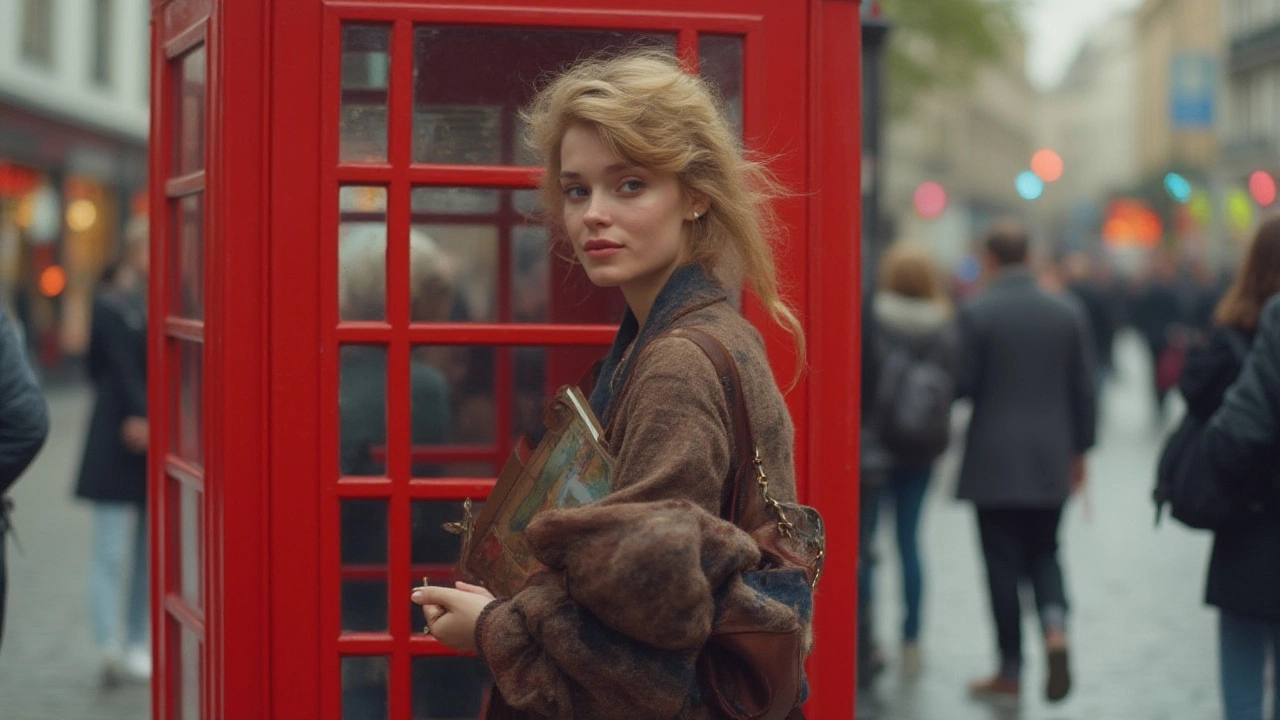
Modeling Myths and Micro-Tips: Straight from the Catwalk
Aspiring models get bombarded by weird myths: you must be 6 feet tall, you need superhuman cheekbones, only the loudest personalities win. Most of it, total nonsense. Take Elsa Hosk. She’s 5'8", once considered “short” for runway, but she landed huge campaigns with brands like Dior and Versace just by showing versatility and a relentless work ethic. Diversity isn’t just a buzzword anymore. Agencies are finally scouting all heights, shapes, and looks to match brands chasing real-world customers—not just fantasy ideals.
One rule doesn’t change: you need a killer portfolio. “Polas”—the no-makeup, no-frills snapshots—matter more than thousand-pound editorial shoots. Why? Clients want to see how you look on a Tuesday morning, not just after a four-hour glam session. Sofi Berelidze, a top booker at Storm Models, says half the time scouts add someone based on an iPhone snap from a friend, not a studio portrait. It’s proof you can’t fake “something about you.” Staying authentic and natural wins more than overposed or heavily-filtered shots ever will.
Another pro tip: never pay massive upfront fees for comp cards, photoshoots, or “exclusive masterclasses.” Scams still hide behind slick websites and big promises. Real reputable agencies only deduct their costs when you work. They never ask for huge “setup” payments just to get your foot in the door. Check what the National Careers Service recommends—only sign with companies on respected agency lists.
Let’s talk castings. Those open calls can be strange, awkward, and intimidating. But you don’t need expensive designer outfits to get noticed. Neat, basic clothes that show off your silhouette work best: think fitted jeans, a plain tee, and shoes you can move in. Don’t show up caked in foundation; simple grooming wins more than layers of makeup. Remember, your walk counts almost as much as your photos. Netflix’s “Next in Fashion” judge and model Eva Apio often tells newcomers to practice their walk wearing different shoes—including bad ones. If you can walk in the clunkiest trainers you own, you’ll handle platform heels with zero fear on the runway.
Make friends with the other models. Some roles might feel competitive, but your fellow newcomers are your best support system. Supermodel Jordan Barrett said his earliest friends on set helped him dodge rookie mistakes, like accidentally eating props during an ad shoot or misunderstanding a “call time” (translation: the actual start of work). Support each other, trade info, and laugh at all the stuff no one tells you about: the early morning call times, the hilarious wardrobe fails, or surviving a fashion show on nothing but flat whites and doughnuts.
Eyes on social media: agencies scan Instagram, TikTok, and even LinkedIn for new faces. It matters how you present yourself. No need to be “influencer-perfect,” but polished, authentic accounts showing your hobbies, personality, and day-to-day looks can tip the odds in your favor. Think of it as your behind-the-scenes advertising. A 2025 Agency Trend Report said 47% of new contract offers last year started after a scout spotted someone online. Keep content real, respectful, and always professional—future clients could be watching before you ever know you’re on their radar.
- Choose agencies with legit track records—never pay for "discovery" or fast-tracking.
- Practice walking on tough surfaces—pavement, sand, carpet—to conquer any runway.
- A capsule wardrobe for castings: fitted jeans, white tee, neutral tank, simple boots, clean sneakers.
- Embrace “no makeup” photos—show your real skin and bone structure.
- Stay connected: group chats with other models save time (and nerves) before new jobs.
Sound boring or overwhelming? It can be. But it’s also the only way to break out from the thousand hopefuls with the exact same dream as yours.
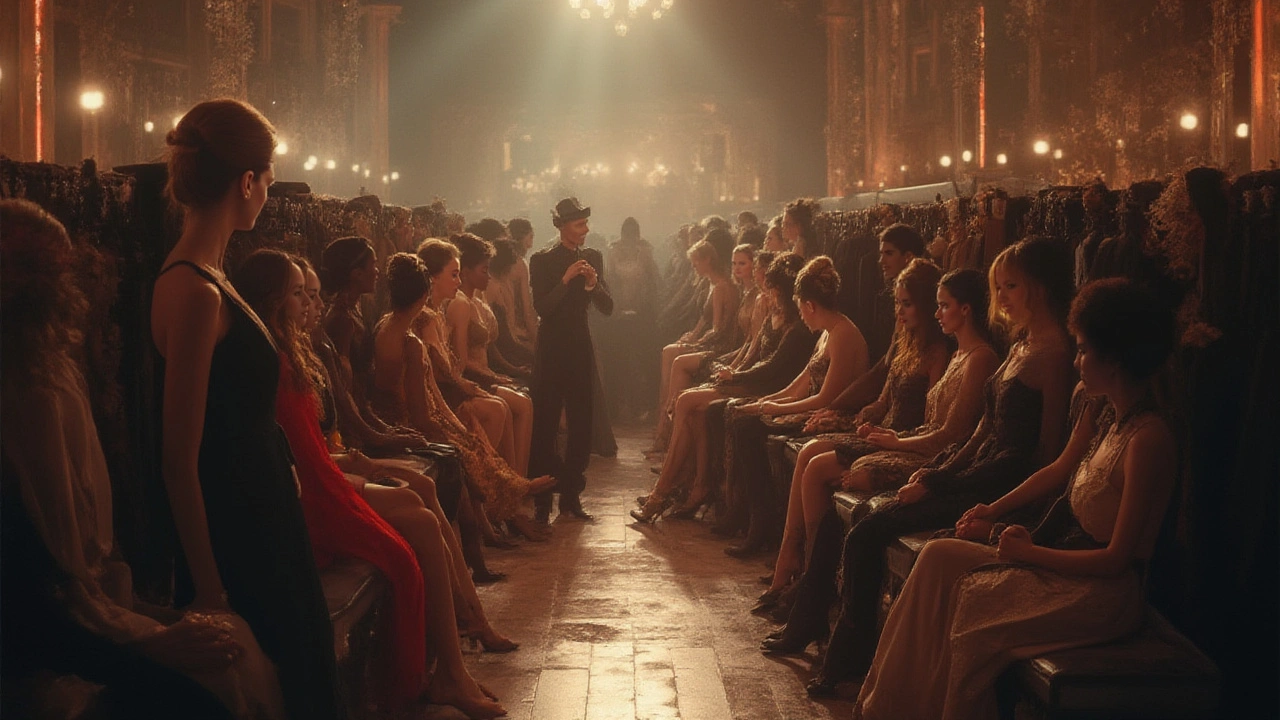
Staying Sane, Safe, and Savvy: Models’ Top Survival Wisdom
The number one thing every successful model says: set boundaries early. There’s a myth that saying “no” in the industry kills your prospects. The reality? Saying “no” when something feels off usually earns respect (and keeps you from bad situations). Supermodel Adut Akech and activist/model Munroe Bergdorf both push for clear communication. If a job looks dodgy, you’re pressured to do something sketchy, or the location seems unsafe—contact your agent, skip it, and remember there will always be another gig. Safety comes first, always.
Be smart with your money. Job payouts might look generous, but taxes, agency fees, and slow invoicing eat up more than you expect. Reliable models keep spreadsheets or budgeting apps to track every job. I spoke to a Change Recruitment report analyst, who said nearly half of UK models who quit by their second year blame “cash chaos” for the burnout. You’re better off treating early paydays as business income, not splurge cash.
Nourish your body like it’s your most important prop. That’s not glamorous advice, but it’s practical. Strict diets aren’t sustainable. Instead, most models find routines that work with their demands: simple meal prepping, always carrying protein bars, and learning the locations of the nearest supermarkets near casting venues. London’s Fashion Week has even started welcoming food trucks backstage since 2022, after a rise in buyers fainting (yes, this really happened). You want energy when you need to deliver for last-minute bookings or 12-hour shoot marathons.
The mental grind lasts longer than the physical. Stress is real: bookers expect immediate replies to emails, weight can vary with stress, hair gets fried by endless products, and “bad skin” weeks happen to everyone. Naomi Campbell—yeah, that Naomi—still swears by facials, yoga, and keeping her dog nearby for mental resets during tough jobs. You need something for your own sense of sanity. Try journaling, long dog walks (Rufus gets his every morning, rain or shine), or hobbies far from the world of cameras and critics.
Models who become icons aren’t just photogenic—they stand up for themselves, learn constantly, and move with purpose. Read your contracts carefully. Ask for written terms before accepting commissions. Stay on top of new agencies, trends, and brands. Think long-term: apprenticeships with stylists can add backup options later. More than one top model has transitioned into fashion design, marketing, or agency management after a few years working.
Don’t forget fun. Fashion is unpredictable—a shoot may turn into a spontaneous road trip or an all-night party with stylists, makeup artists, and set dogs like my own Rufus (who once ate half a designer baguette backstage). The highs are brilliant, the lows manageable with support and good habits. Despite the chaos, it’s the unpredictable twists, surprising friendships, and genuine moments that make modeling something more than just “a job.”
Let’s put the most vital takeaway up front: sticking with fashion models’ advice isn’t about magical luck or endless nerves of steel. It’s about getting back up. It’s learning to be tough but kind. It’s trusting the journey, even on tough days when things feel stuck. Every pro model started where you are—wondering if you stand out, practicing your walk, and hoping someone notices. There’s room for you—genuine, unique, determined you—if you’re willing to show up, learn, and keep chasing it. That’s the honest code you won’t find in a press release, but hear from every real model worth listening to.
